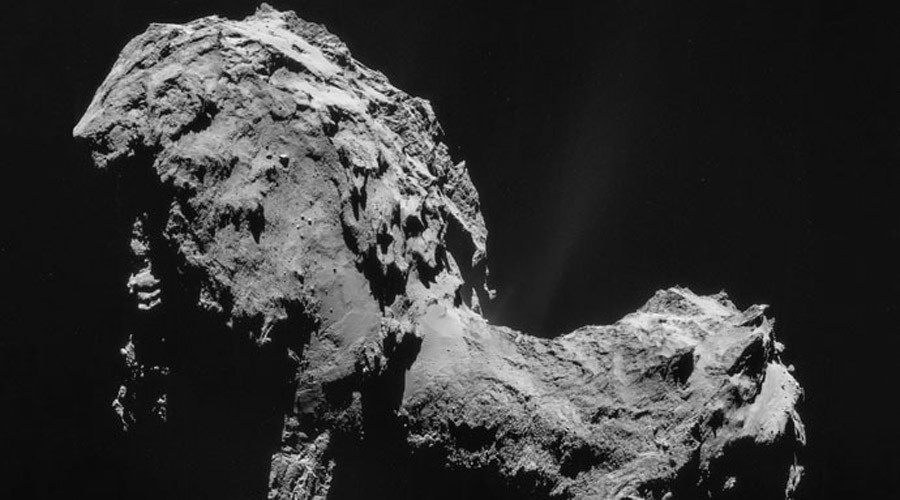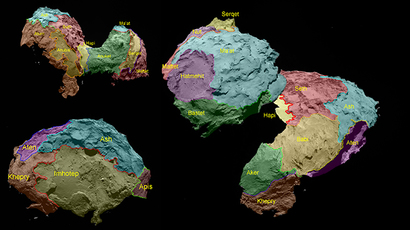‘Big surprise’: Rosetta finds primordial oxygen on 67P comet

Large quantities of oxygen have been discovered in the gassy halo of Comet 67P/Churyumov-Gerasimenko, with stunned scientists saying that the “big surprise” challenges theories about the formation of our Solar System.
“We believe this oxygen is primordial, which means it is older than our Solar System,” said scientist Andre Bieler of the University of Michigan.
The oxygen molecules found by the European Space Agency’s Rosetta spacecraft in the comet’s halo must have existed“before or at” the formation of our solar system, Bieler said.
The discovery challenges prevailing existing theories about the formation of our solar system some 4.6 billion years ago.
The research community had previously ruled out the presence of oxygen on comets, because it reacts too well with other atoms, and scientists “never thought that oxygen could ‘survive’ for billions of years,” said Kathrin Altwegg of the University of Bern, who co-authored the study published in the journal Nature on Wednesday.
The oxygen was detected by the ROSINA mass spectrometer, one of the instruments aboard the Rosetta spacecraft that has been studying the comet since August 2014. After it met with Churyumov–Gerasimenko on August 6 2014, Rossetta’s Philae lander became the first spacecraft to land on a comet nucleus in November 2014.
To eliminate any false-positive readings of the new discovery due to possible instrumental defect, the scientists checked oxygen levels at different distances from the comet.
More oxygen was discovered closer to the comet, and as the spacecraft flew further away, it detected less oxygen. Furthermore, the ratio of water to oxygen in the 67P atmosphere remained constant over months that ROSINA was collecting measurements.
“This evidence of oxygen as an ancient substance will likely discredit some theoretical models of the formation of our Solar System,” said Altwegg.
Oxygen is now the fourth compound discovered by ROSINA while probing 67P. Previously the scientists announced the discovery of water, carbon monoxide and carbon dioxide.
This is the third time that oxygen molecules have been found in the Solar System beyond the Earth's atmosphere. The other findings of oxygen were made on the icy moons of Jupiter and Saturn.
Политика конфиденциальности | Правила пользования сайтом








